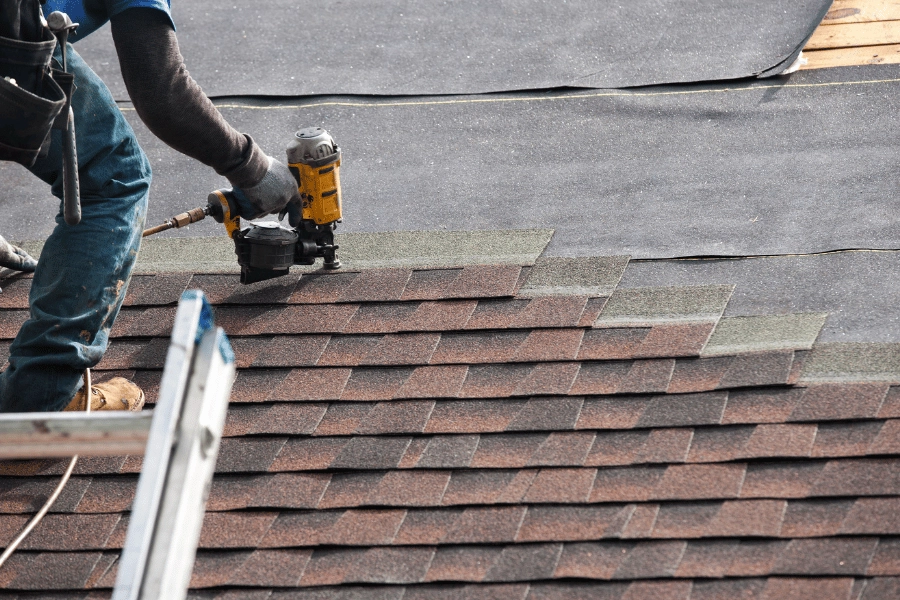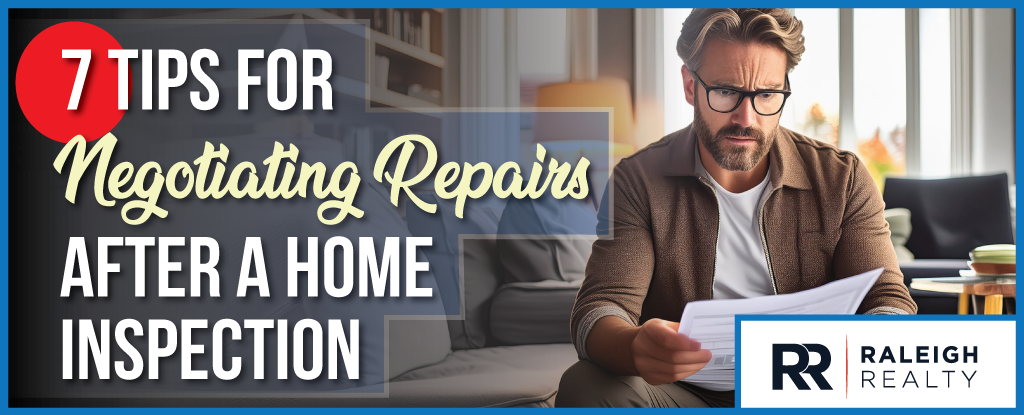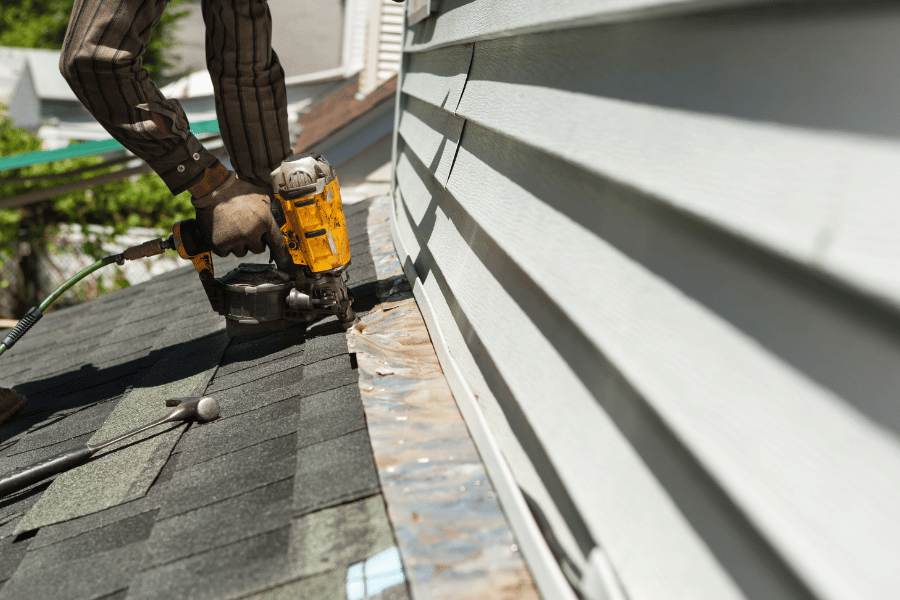Signs Your Roof May Need Repair
Do you need a new roof? Here are ten alarming signs your roof needs repair.
Your roof is your home's first line of defense against unpredictable weather, from scorching summer heat to winter ice storms. As a homeowner or prospective buyer in the Raleigh area, recognizing the warning signs of roof damage can save you thousands of dollars and prevent catastrophic interior damage.
A roof protects your home from the sun, snow, rain, hail, wind, and debris from trees. The constant beating your roof takes every day makes it one of the most essential pieces of your home's structure, and that's why roofing costs are not cheap.
Here are ten critical indicators that your roof needs immediate professional attention.
1. Advanced Roof Age
The age of a roof is a clear sign that it may need repair. The average age estimate for each roof is different, so pay attention to how your roof is constructed and the potential warning signs for the materials used on your specific roof.
Besides the age of your roof, temperature fluctuation and storms are two of the largest problems that cause roof damage. No matter the age of your roof, you should constantly monitor it, especially after storms and as the seasons change.
Most asphalt shingle roofs last 15 to 30 years, while metal roofs can endure 40 to 80 years. If your roof is approaching or exceeding its expected lifespan, it's time for a professional inspection, regardless of visible damage.
The amount of sunlight your roof receives also plays a large role in the age of your roof. If many trees block the sunlight or even drop debris on the roof, water will sit for a longer period of time, increasing the chances of damage or mold growing. In general, your roof should receive more sunlight than not; too much heat is what may cause issues.
Some people prefer to be reactive instead of proactive regarding their roof, so they will wait until there is a problem. Once your roof starts leaking, it creates internal damage within the house, leading to much bigger problems than a new roof.
Your roof's age matters when it comes to home insurance and when you make an insurance claim. If your roof is past its average age estimate, it's typical for the insurance company to ask for more proof that the roof is okay by hiring a specialized roofing contractor, denying the coverage altogether, or sometimes allowing the coverage.
Check your home improvement records or ask previous owners about the last roof replacement. In Raleigh's climate, roofs age faster due to UV exposure, humidity, and temperature fluctuations. Even if your older roof looks intact, the underlying materials may be deteriorating, compromising your home's protection.
.png)
2. Shingles Buckling or Curling
One clear indicator that your roof needs repair or a new roof is when the shingles begin buckling or curling. This poses a serious threat to your home because it will allow water to pass the main level of protection.
Shingle curling occurs when moisture infiltrates the shingle mat or when poor attic ventilation creates excessive heat buildup. Buckling typically results from movement in the roof deck or improperly installed underlayment.
Walk around your property and look up at the roofline. Healthy shingles lie flat against the roof surface. Curled edges create gaps where water can penetrate, while buckled shingles appear wavy or rippled. Both conditions accelerate wear and create vulnerability to wind uplift during storms.
Once shingles begin buckling or curling, you should have a roofing contractor come to your home immediately for inspection of the entire roof. Sometimes, it may be a few shingles here and there, where a patch job will work fine for a few years.
The high humidity and temperature swings in the Triangle area make shingle distortion particularly common.
3. Loose Ballast on Flat Roofs
Ballasted roofs have been around for over a decade. The problem is not necessarily with loose ballast but with the connection to the shingles. It's relatively easy for water to fill up and stand if the ballast breaks loose from the shingles.
Ballast systems use gravel, stone, or pavers to hold down roofing membranes on low-slope or flat roofs. When ballast becomes loose or displaced, it exposes the membrane to UV damage and wind uplift.
After storms, inspect your flat roof areas for scattered gravel, uneven ballast distribution, or bare membrane patches. Loose ballast can also clog gutters and downspouts, creating additional drainage problems.
Ballast migration often indicates underlying membrane issues or inadequate initial installation. This problem requires immediate attention to prevent membrane failure.
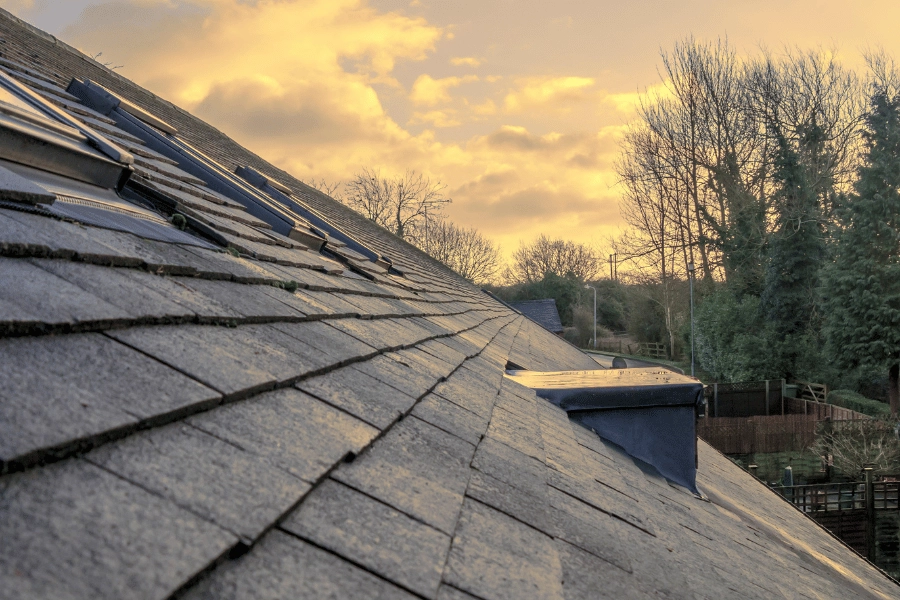
4. Active Leaking and Water Intrusion
A leaking roof is a clear sign that the roof needs repair or that you need a whole new roof altogether.
While ceiling stains and dripping water are clear indicators, leaking often manifests subtly. Look for discolored drywall, peeling paint, warped wood, or musty odors in upper floors and attic spaces.
Water follows the path of least resistance, meaning the leak source may be far from where you notice moisture. A stain in your living room could originate from damaged flashing around a chimney or vent penetration.
Even minor leaks can cause extensive structural damage, mold growth, and electrical hazards. Document the damage with photos and contact professionals immediately.
Some home warranties and insurance policies may cover a leaking roof, and depending on the cause of the damage, they may even cover an entirely new roof (don't count on it, though).
Regarding ROI on the sale of your house, a new roof is likely to be close to even. If you need a new roof because of leaks or internal damage, don't hesitate to buy one. The roof will help protect your house and your family, and help you sell your home fast.
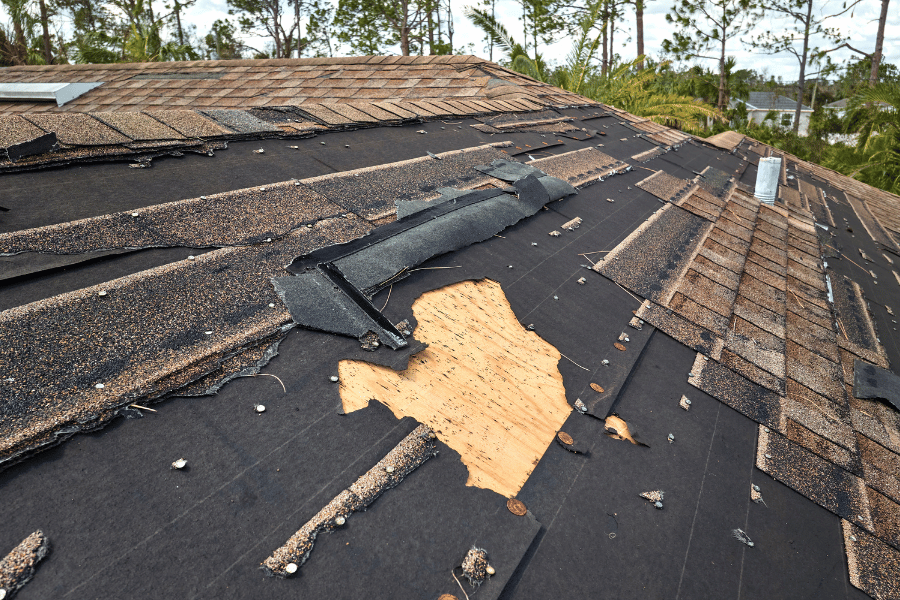
5. Compromised Valleys
Valleys in the roof are clear indicators that the roof needs repair and is damaged. Valleys are often normal wear and tear caused by water sitting and weakening the strength of the wood below the shingles.
Roof valleys channel water from two roof planes into gutters, handling massive water volumes during storms. These areas experience concentrated water flow and debris accumulation, making them prone to failure.
Valley problems include separated or torn valley flashing, granule loss along the valley line, or visible rust on metal valleys. Ice dams in winter can also damage valley systems by forcing water under shingles.
These valleys need to be fixed immediately. The valleys could be from a storm, ice damage, or some other cause, where the insurance company may even help with the repair. Hiring a roofing contractor to assist makes much sense when this problem occurs.
Once a valley is formed, the water will continue to move in that direction, thanks to gravity. Once the water continues to stand in the same valley already weakened from the water, it exacerbates the problem and may even cause the roof to cave in at some point.
6. Missing Shingles
If your roof is missing shingles, you'll want to fix that as soon as possible. The first layer of protection (the shingle) exposes your roof's adhesive to water. It can only protect the roof so much without the shingles' assistance.
High winds can lift and remove individual shingles or entire sections, especially if the shingles were already compromised by age or poor installation. Missing shingles expose the underlayment and decking to direct weather exposure.
Once shingles begin failing, wind can more easily access and remove adjacent shingles, creating an expanding area of vulnerability. What starts as one missing shingle can quickly become a major repair project.
When shingles go missing, you should be able to see them if you're checking out your roof consistently. If you can fix it sooner rather than later, it shouldn't cause permanent damage to the roof, though it could be a sign that the actual roof needs to be replaced.
While emergency tarping can provide temporary protection, professional replacement is necessary to maintain your roof's integrity and your homeowner's insurance coverage.
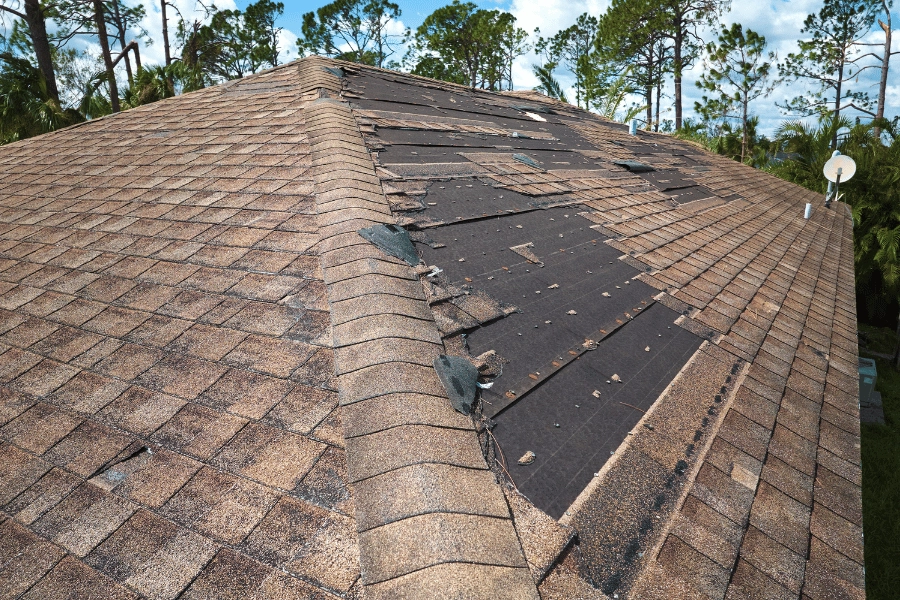
7. Deteriorating Chimney Flashings
Chimney flashing creates a watertight seal between your chimney and roof. This multi-material junction experiences significant expansion and contraction, making it particularly susceptible to failure. If the flashings become loose or are not properly sealed, water can easily sneak into your home.
Look for separated caulk lines, rust stains on brick or siding, loose or missing flashing pieces, or white mineral deposits (efflorescence) on chimney surfaces. Interior signs include water stains on walls adjacent to the chimney or musty odors near the fireplace.
Chimney flashings should be observed often to ensure they are healthy and in proper working order. Proper flashing installation requires expertise in both roofing and masonry. DIY repairs often fail quickly and can void warranties.
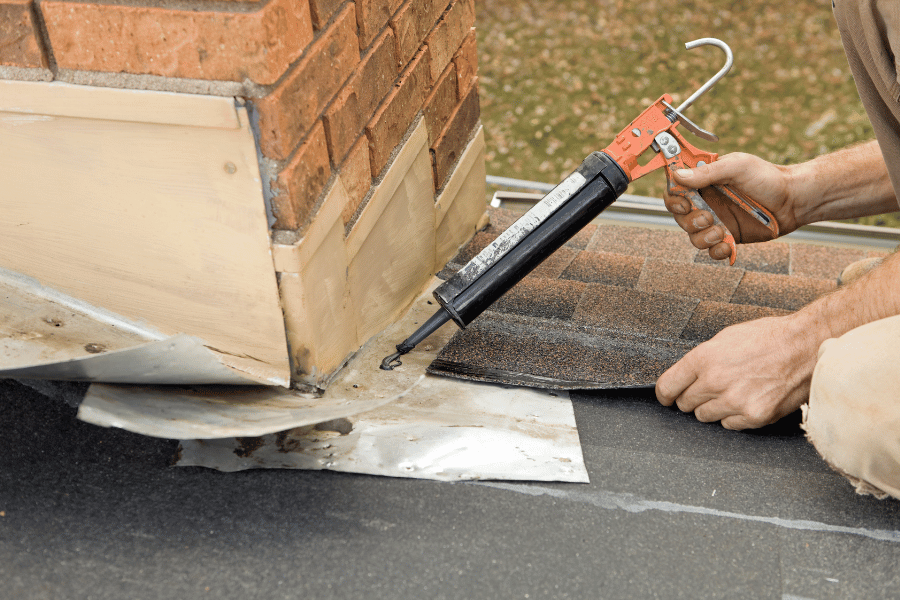
8. Shingle Granules in Gutters
When you're cleaning out your gutters, and you find pieces of shingles in the gutters, it indicates a problem. If fragments of shingles start breaking off, you likely need to hire a roof inspector to determine the actual health of the roof, especially if your roof is reaching its average age estimate.
All asphalt shingles shed some granules, especially when new. However, excessive granule loss indicates advanced shingle deterioration and UV protection failure.
Small amounts of granules after installation or major storms are normal. Concern arises when you find large quantities regularly, notice bare spots on shingles, or see granules accumulating consistently in one area.
Granules protect the asphalt mat from UV damage. Once granule loss becomes significant, shingle deterioration accelerates rapidly,
Hiring a roofing contractor when you find broken shingles can help with your home warranty and insurance claims on your roof as well.
9. Roof Deck Bounce or Springiness
If you're walking around on your roof and find some spots that are a little bouncy, it could be due to underlying water damage. Sometimes, water may not even be able to be seen without actually feeling the roof for yourself.
A properly supported roof deck should feel solid underfoot. Bouncing, springiness, or visible sagging indicate structural problems that could lead to catastrophic failure.
Deck bounce can result from inadequate initial framing, water damage to support structures, or overloading from multiple roof layers. In some cases, termite or other pest damage compromises structural integrity.
Never walk on a roof that feels unstable. This condition requires immediate professional structural assessment and potentially emergency repairs.
If you are selling your home, then you will want to make sure there is no bounce in the roof, or it could lead to more problems down the road for the buyers, who will have inspectors looking at the roof and will need to have home insurance companies approve them for the purchase.
10. Unexplained High Energy Bills
Your roof plays a crucial role in your home's energy efficiency. Damaged roofing allows conditioned air to escape and outside air to infiltrate, forcing your HVAC system to work harder.
Energy inefficiency can stem from missing shingles allowing air infiltration, inadequate or damaged insulation from roof leaks, or poor ventilation, causing excessive attic heat buildup. Ice dams can also damage insulation and create thermal bridges.
While roof repairs require upfront investment, they often pay for themselves through reduced energy costs and prevented interior damage.
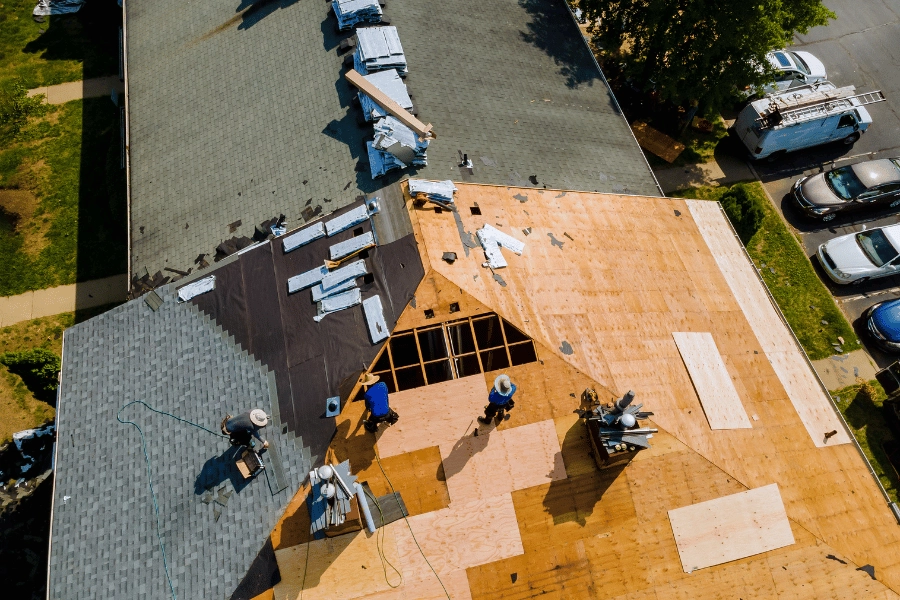
Understanding Different Roof Types
Asphalt Shingle Roofs
Asphalt shingle roofs are the most common residential roofing material in Raleigh and offer good value and moderate longevity. Three-tab shingles typically last 15-20 years, while architectural shingles can endure 25-30 years. They're susceptible to wind damage, granule loss, and thermal cycling damage from temperature extremes.
Metal Roofing Systems
Increasingly popular in North Carolina, metal roofs offer exceptional longevity (40-80 years) and superior wind resistance. They're excellent for areas prone to severe weather but require proper installation to prevent thermal expansion issues and noise concerns during rain or hail.
Tile Roofing
Clay and concrete tiles provide excellent durability and fire resistance, lasting 50+ years. However, they're heavy, requiring enhanced structural support, and individual tiles can crack from impact or freeze-thaw cycles. Walking on tile roofs requires special care to prevent breakage.
Slate Roofing
The premium option, natural slate can last over 100 years with proper maintenance. It offers unmatched durability and fire resistance but requires specialized installation and repair expertise. The weight requires substantial structural support, and replacement slate can be expensive and difficult to match.
Flat or Low-Slope Roofing
Common on commercial buildings and some residential applications, these systems use modified bitumen, EPDM rubber, TPO, or built-up roofing materials. They require regular maintenance and professional inspection since drainage issues can cause rapid deterioration.
FAQs
What is the life expectancy of a roof?
Depending on the type of shingles used, roofs can last more than 50 years if properly cared for. Most roofs with asphalt shingles can last up to 20 years.
How much damage does a roof need to be replaced?
A good rule of thumb is that if the damage to a roof is more than 30%, then it is probably time for a roof replacement.
When to Call Professionals
Do not wait for multiple warning signs to appear. Roof problems typically worsen rapidly, especially during Raleigh's storm season. Contact qualified roofing professionals immediately if you notice any of these warning signs. Early intervention can often prevent minor issues from becoming major, expensive problems.
Remember, your roof is a complex system designed to protect your most significant investment. Regular maintenance and prompt attention to warning signs will extend its life and preserve your home's value.
When buying or selling a home, the roof will play a factor in your decision-making. We have had clients, specifically buying a home in Clayton, who chose not to continue purchasing based on roof damage in the inspection report.
The age and health of a roof are two of the main indications of whether or not a roof replacement will be needed soon. Your insurance company may or may not give you home insurance based on the roof's age and health alone, so ensure that the home's roof is in decent condition.
If you are moving to Raleigh and are interested in buying a home with an updated roof, contact the experts at Raleigh Realty.
